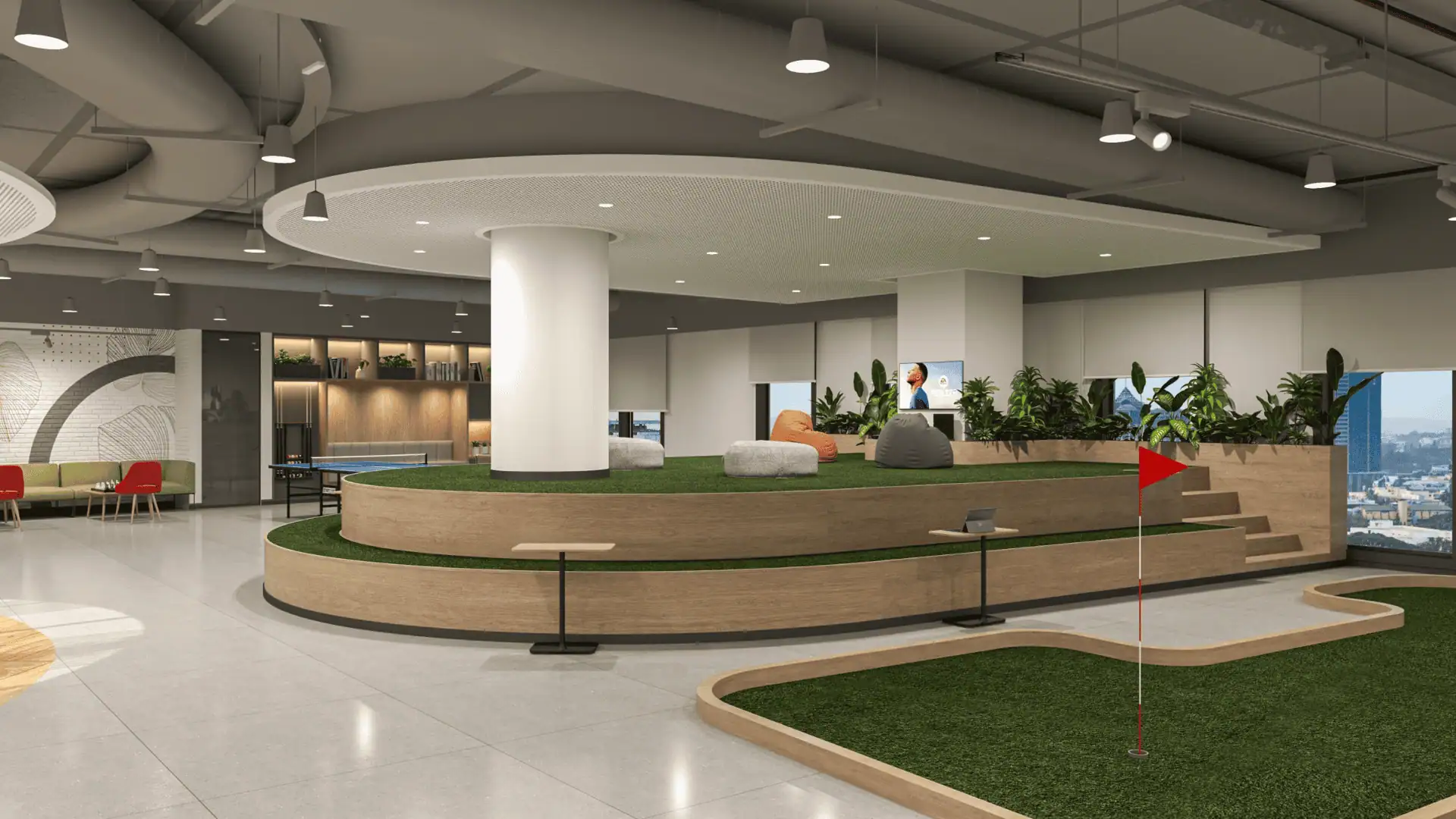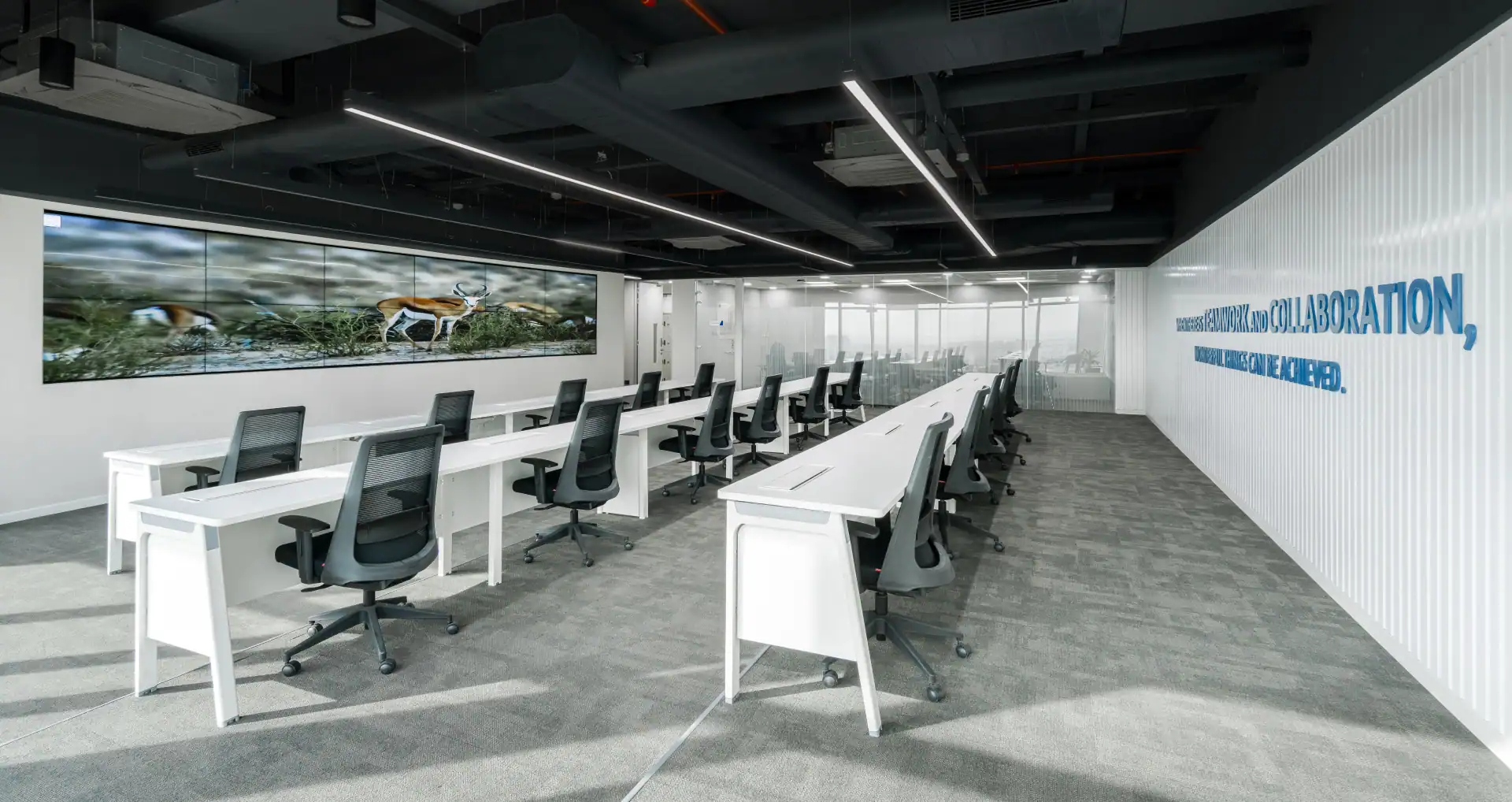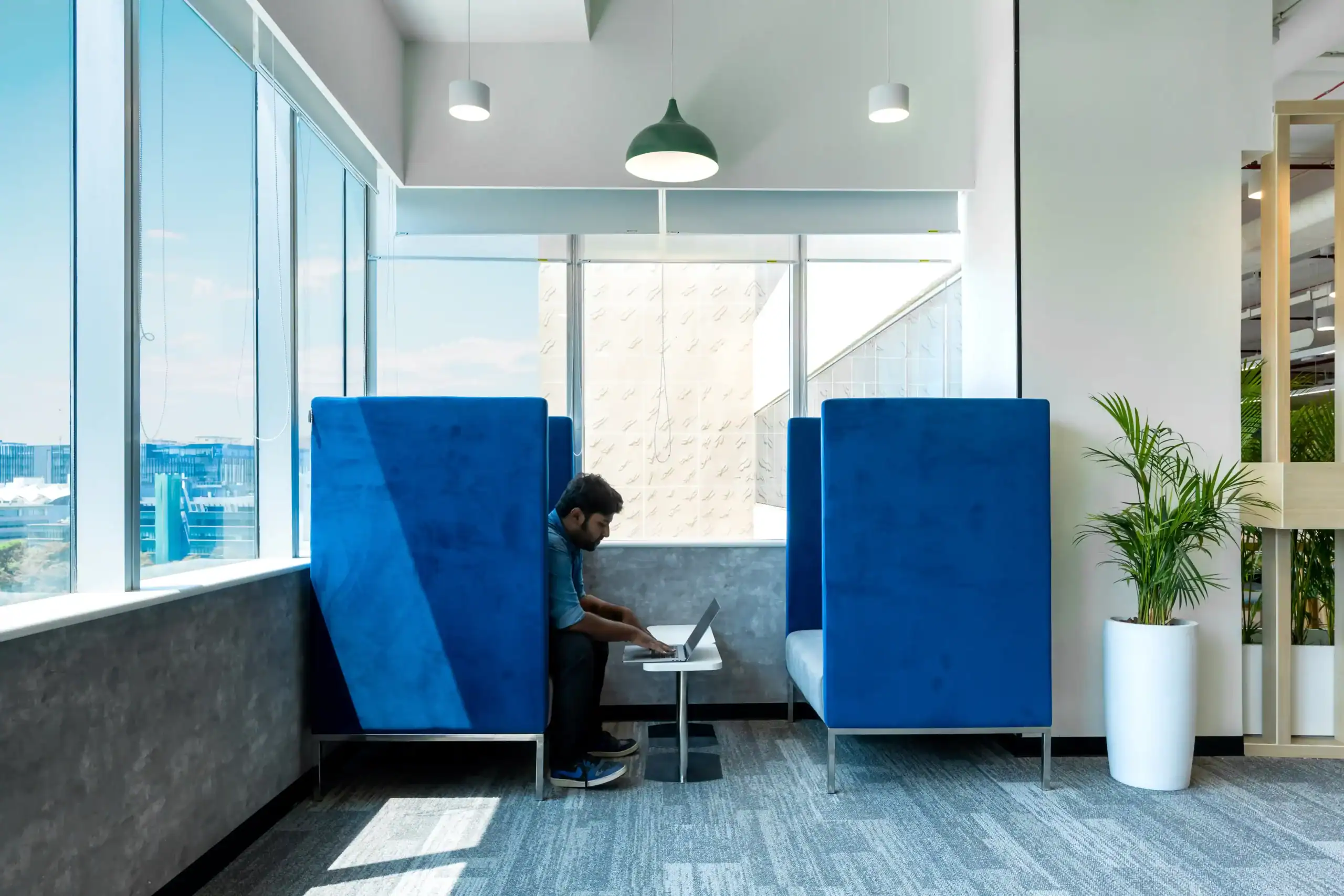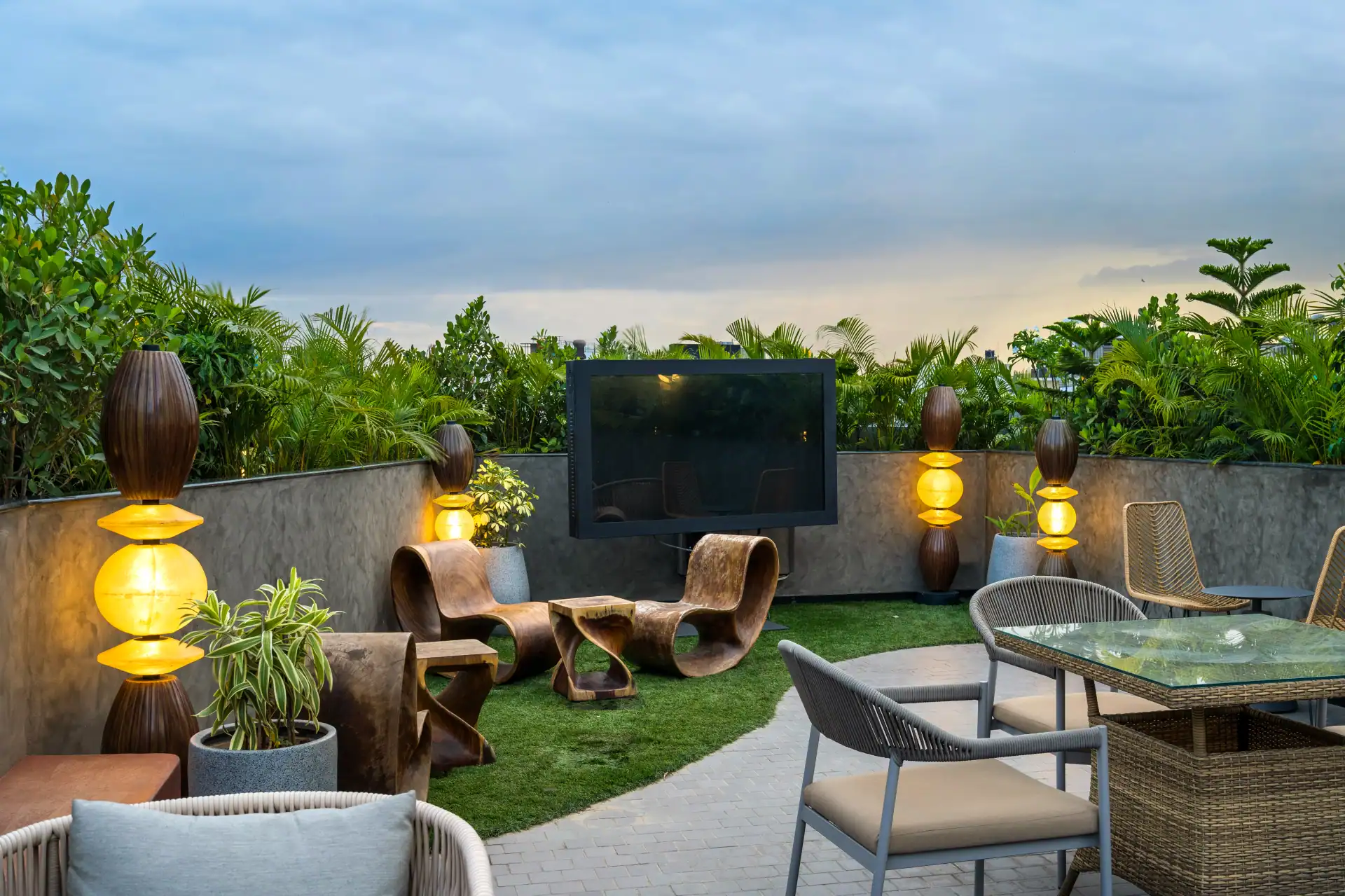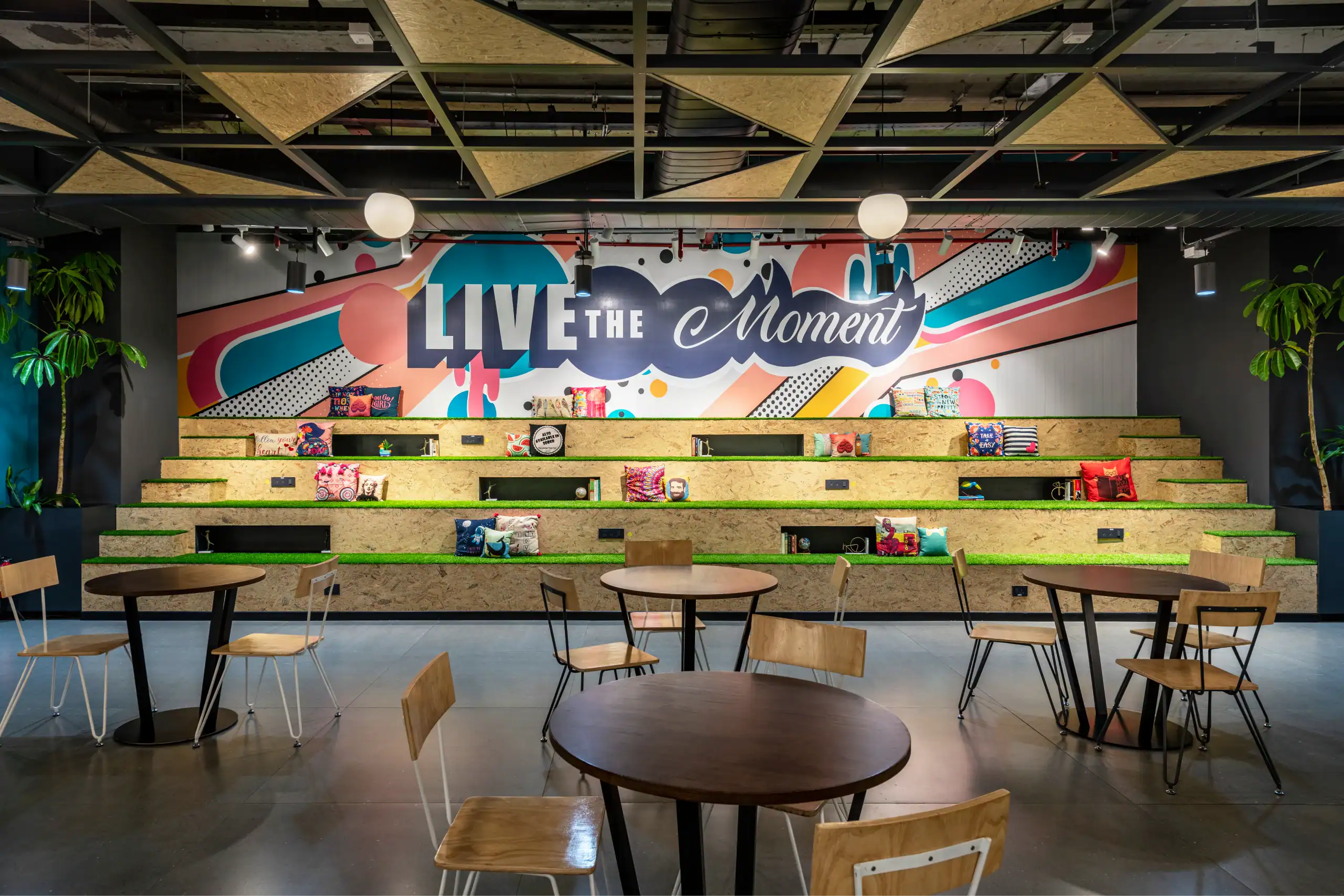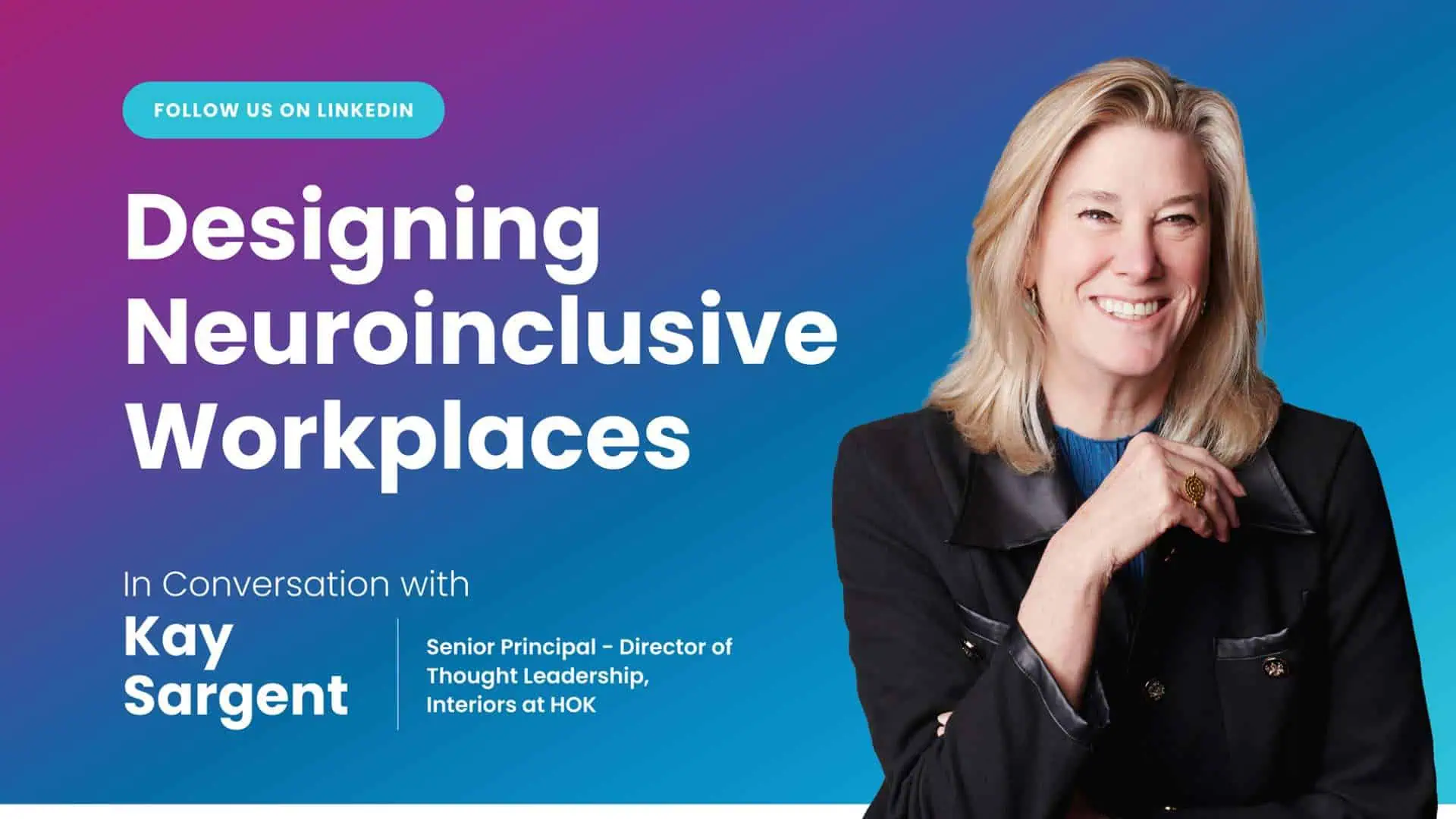Sustainability has become a crucial factor for designing and operating offices because of the urgent global need to reduce carbon emissions and mitigate climate change. The creation of energy-efficient buildings can significantly reduce the environmental impact of the construction industry, which is responsible for a significant portion of global carbon emissions.
According to the World Green Building Council, energy-efficient buildings have been shown to reduce operating costs by an average of 17%, and they have a higher asset value than traditional buildings. This highlights that creating energy-efficient offices can provide monetary, health, and environmental benefits. As the demand for sustainable buildings continues to grow, it is important for organizations to incorporate energy-efficient technologies and renewable energy sources to achieve a more sustainable future.
What is Net Zero Office Design?
Net zero office design is a holistic approach to designing and building offices that aims to minimize the negative impact on the environment and maximize the comfort and well-being of employees. The ultimate goal is to create a self-sustaining office space that generates as much energy as it consumes. The concept of net zero refers to the balance between the energy used by the building and the energy produced on-site, with the goal of achieving zero net energy consumption.
7 Key Strategies to Produce Net Zero Office Designs
Net-zero office designs have numerous benefits for the environment, people, and organizations. Improved indoor air quality and natural light help in improving the employees’ health and well-being, leading to better productivity. Financially, there can be significant savings on energy bills and maintenance costs for the organization. Organizations can also demonstrate their commitment to sustainability and employee health by reducing their office’s carbon footprint. Mentioned below are 7 key strategies that organizations can use to create net zero office spaces.
Energy-Efficient Lighting
Energy-efficient lighting systems such as LED bulbs consume significantly less energy and generate less heat, providing the same amount of light while also reducing energy consumption. Similarly, the use of smart lighting systems can reduce the carbon footprint of any office design. Smart lighting systems use sensors and automation to ensure that lights are only on when they are needed. Further, smart lights can also adjust the brightness of lights based on the amount of natural light in the room, further reducing energy consumption.
Use of Natural Light
Daylighting, which involves using natural light to illuminate the office, is a cost-effective and energy-efficient way to reduce energy consumption. By installing windows, skylights, and light shelves, natural light can be directed into the office, reducing the need for artificial lighting. Exposure to natural light can improve mood and productivity and reduces absenteeism in the workplace. Additionally, natural light creates a more pleasant and inviting atmosphere, which can enhance the overall experience of employees and visitors.
Renewable Energy Sources
Renewable energy sources, such as solar and wind power, generate clean energy and do not emit harmful greenhouse gasses into the environment. Solar panels can be installed on the roof of the office building or in a nearby field to generate electricity. It is a reliable and cost-effective way to generate electricity, and any excess energy can be sold back to the grid. Wind turbines can be installed on-site or in a nearby field to generate electricity, providing a reliable and sustainable source of energy.
Water Conservation
Water is a valuable and finite resource, and reducing water consumption is an essential step towards achieving net zero water usage. Offices can conserve water in various ways, including installing low-flow fixtures, such as faucets, toilets, and urinals, which use less water than traditional fixtures. This can result in significant water savings, reducing the amount of water used and the associated energy required to treat and transport it. Another way to conserve water is through rainwater harvesting. Rainwater can be collected and used for non-potable purposes, such as flushing toilets, irrigating landscapes, and cooling systems.
Sustainable Materials
Sustainable materials are designed and produced with a focus on reducing their environmental impact throughout their life cycle, from the extraction of raw materials to their disposal. Using materials, such as recycled steel, reclaimed wood, and low-impact concrete, can reduce the carbon footprint of a building while still maintaining its structural integrity and aesthetic appeal. Additionally, the use of sustainable materials in furniture, flooring, and insulation can also contribute to a healthier indoor environment by reducing the presence of harmful chemicals and promoting better air quality.
Optimizing Building Performance
By continuously measuring energy use, carbon emissions, and other performance metrics, offices can identify areas for improvement and implement strategies to reduce energy consumption. For example, data analytics and machine learning algorithms can be used to analyze building performance data and identify patterns that can be addressed through targeted energy-saving measures. Additionally, by tracking indoor air quality, temperature, and other environmental factors, building operators can identify areas where improvements are needed and take action to create a healthier and more comfortable indoor environment.
Building Orientation
By carefully positioning the building on the site, designers can take advantage of natural light, ventilation, and shading to maximize energy efficiency and reduce the building’s environmental impact. Proper orientation can also help in reducing the building’s heating and cooling loads, which can significantly reduce energy consumption. Further, appropriate building orientation can also enhance occupant comfort and well-being. By maximizing natural light and ventilation, designers can create a more pleasant and comfortable indoor environment that promotes productivity and overall well-being.
Key Takeaways
Organizations must conduct sustainability assessments to map the energy consumption, water usage, and carbon footprint of their offices. This will help them determine areas for improvement and set realistic sustainability goals. Additionally, they must encourage sustainable practices among employees, such as turning off lights and equipment when not in use, reducing paper usage, and using reusable water bottles, to further reduce the environmental impact of the office. The organizational culture should be such that the workforce feels like they are part of a larger purpose that is co-dependent and thrives with the environment.
Looking for expert advice on achieving net zero? Contact us today to schedule a design consultation and start your journey toward net zero workspaces!
Related Articles:

